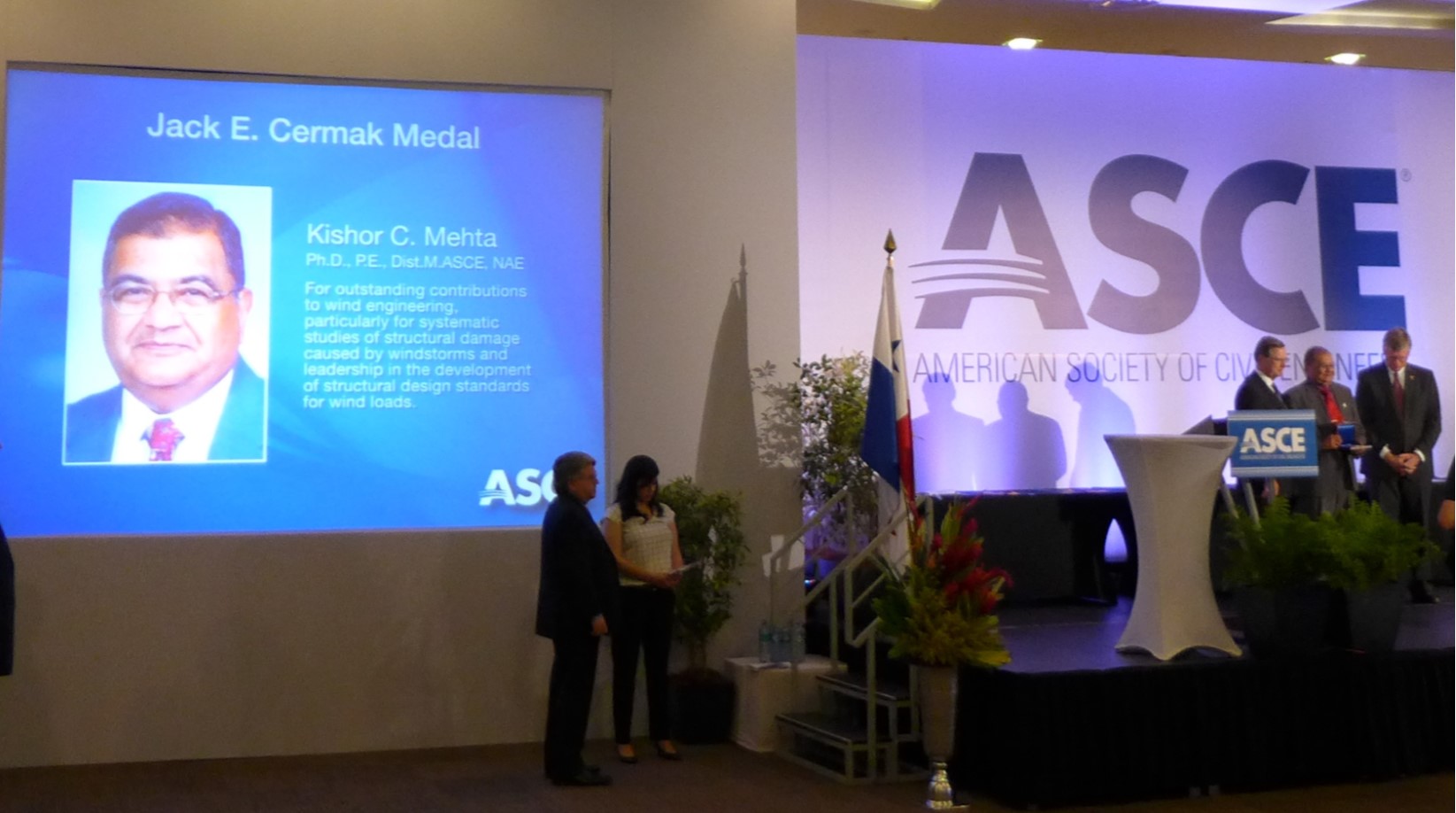NWI Co-Founder Recognized with Award at ASCE World Conference 2014

(Above photo): NWI co-founder Dr. Kishor Mehta was recently recognized with the Jack E. Cermak Medal for outstanding wind engineering research at the ASCE World Conference 2014 in Panama City, Panama.
NWI's Professor Kishor Mehta, Ph.D., was recently awarded the Jack E. Cermak Medal for his outstanding wind engineering research. The presentation was given by ASCE President Randy Over at the ASCE World Conference in Panama City, Panama, and reflects the lifetime of innovative wind engineering research of which Dr. Mehta has been author and collaborator.
Kishor Mehta obtained his B.S. and M.S. degrees in civil engineering from the University of Michigan. Prior to pursuing his Ph.D. in structural engineering at the University of Texas-Austin, he worked for three years as design engineer at the construction site of Glen Canyon Dam (Lake Powell) in Page, Arizona. After his stint in Austin and once he had earned his doctoral degree, Dr. Mehta joined Texas Tech University as civil engineering faculty.
At Texas Tech, he was one of the founding members of the wind engineering research program in 1970 when a devastating EF-5 tornado damaged and destroyed almost half of the West Texas city of Lubbock (population then: 160,000). The following research and education program in wind evolved into an interdisciplinary Wind Science and Engineering (WISE) research center with a stellar national and international reputation. He was the Director of the wind research center from 1986 through 2003.
With the assistance of an NSF IGERT grant, he developed the interdisciplinary Ph.D. degree program in Wind Science and Engineering at Texas Tech University in 2007, the only degree of its kind in the country.
His research contributions include the development of above-ground shelters for tornadoes, the EF-scale for tornado intensity ratings, and the Wind Engineering Field Research Laboratory (WERFL).
He was Chair of the Wind Load Task committee of ASCE 7 from 1976 through 1995. He is a Distinguished Member of the American Society of Civil Engineers and was elected to the National Academy of Engineering in 2004.
According to the New York Times, Dr. Jack E. Cermak was one of the first engineers in the U.S. to use a wind tunnel to gauge the wind's impact on skyscrapers, and who did consulting work on the World Trade Center and the Sears Tower. Previous wind tunnels had been built primarily to test airplanes and missiles with wind coming from only one direction and at a constant speed. Dr. Cermak's tunnel, which was roughly 10 times as long as aeronautical tunnels, could produce vertical wind currents and simulate powerful gusts and the volatile air movements on the surface of the Earth.
Photo credit: Jerry Roger, Texas Civil Engineer.
National Wind Institute
-
Address
1009 Canton Ave., MS 3155 Lubbock, TX 79409-3155 -
Phone
National Wind Institute - 806.742.3476; Renewable Energy - 806.742.6284 -
Email
National Wind Institute - nwi@ttu.edu; Renewable Energy - windenergy@ttu.edu
